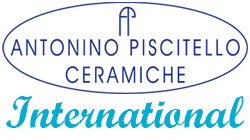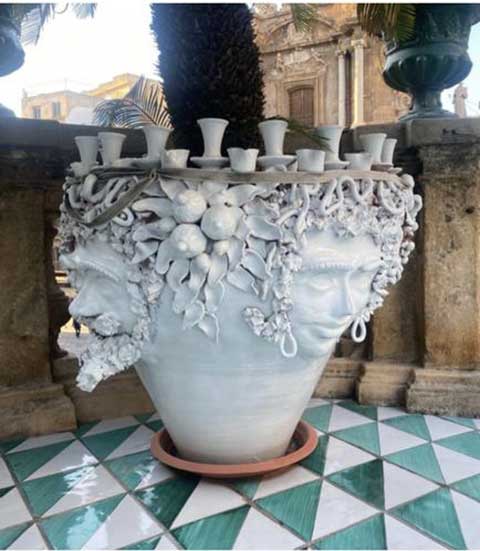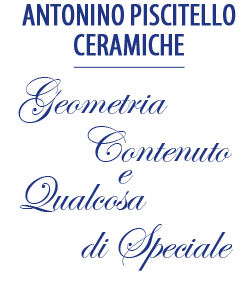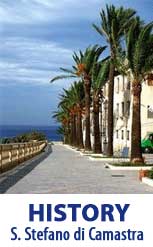The art of ceramics is one of the oldest arts of man, in fact, the discovery of mixing clay with water and firing it seems to have taken place in the East between the end of the 6th and the beginning of the 5th millennium BC. Even in our Sicilian reality we can affirm that the art of ceramics is the most illustrious and the oldest. Sicily, due to its geographical position, has always been the object of conquest by the most important civilizations, here, in fact, they have left their mark: the Phoenicians, the Greeks, the Carthaginians, the Romans, the Byzantines, the Arabs, the Normans, the Swabians, the Spanish and the French. Although the Sicilian potters have been influenced by the various dominations, they have always highlighted their Sicilian nature in the art of ceramics because the creative elements of these artistic works, namely earth, water and fire are the same elements present in history and in the culture of every Sicilian. As early as the Neolithic age, ceramic finds have been found which have assumed a role of great importance for the knowledge of the history of our island. The first pottery found from this period is characterized by a very rich decoration stamped or engraved, revealed by incrustations of whitish material. The influence of the Greek civilization gives birth in Sicily to the production of black-gloss painted pottery, and later also of red glazed ceramics. But Sicily also welcomes the influences deriving from the West, in fact, from the same period is the presence of vases in the Iberian style of the "bell-shaped glass" at the end of the Neolithic age. In the first Sicilian period, alongside the oriental influence, a peaceful relationship with Malta coexists, which continues until the second Sicilian period. From this period are the findings in the tombs of local pottery and vases of Greek production. During the thirteenth century BC, the Sicilian coasts were abandoned and the Sicilian people withdrew to the mountains: this is the civilization of Pantalica. We arrive at the Iron Age (third Sicilian period) which precedes the arrival of the first settlers. The colonization of the island began around the eighth century. B.C. by the Phoenicians, followed soon by the Greeks. The Greek colonization of Sicily left its mark on civilization and the development of the art of ceramics, bringing a breath of fresh air and refining the techniques used until then in Sicily. But alongside the Greek ceramic production we find objects that repeat the style of local ceramics. In Roman times, the Sicilian artistic tradition did not undergo significant evolutions, except for innovations of a technical nature with the introduction of bricks. During the two centuries of Muslim domination, Sicily assimilated the new techniques brought by the Arabs and namely that of lead glazing, for which Sicilian ceramics gained in beauty. The Muslim influence was so important in Sicily that it remained present with the decorative motifs and techniques used even during the successive dominations.
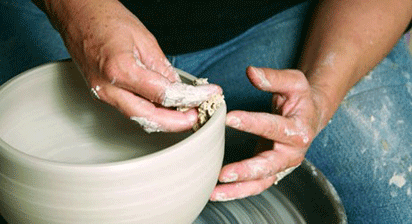
In the second half of the 14th century, with the affirmation of the Spanish domination, there was a slight technical and stylistic change and new colors were introduced, such as blue next to yellow, green and manganese. In the late 1500s and early '600 Sicilian ceramics adopt the style of the Italian Renaissance, which penetrated Sicily in the period of its full development, and lasted throughout the '600. The Renaissance influence is felt in Palermo, Messina and Syracuse. The local industries of the period imitated the ceramics of Venice, Cafaggiolo and Faenza, the first to be known on the island. In this period Palermo's production was imposed on the whole island, with the beautiful oval vases that refer to the Sicilian-Muslim vases. An interesting feature to underline, as Ragona points out in his book The Russo Perez collection in the historical context of Sicilian ceramics, is the neck of the Palermo oval vases which is wider at the junction with the belly, than at the opening of the mouth, while in Faenza vases it is generally vice versa. During the 1600s and early 1800s, the ceramic production of a small town in the province of Agrigento was also introduced: Burgio, which cultivated the art of majolica. Towards the end of the 16th century, a colony of Catalan potters settled in Burgio, setting up majolica factories there which soon contested the dominance of the Sciacca ceramics at the time flourishing and very famous for the production influenced by Spanish ceramics, the so-called tiles enamelled "di mursia". Burgio soon assumed considerable importance maintaining it in the seventeenth and especially in the eighteenth century. Burgio's production closely resembles that of Palermo, in fact, the same decorative motifs are repeated, such as the medallion with two segments and the back with trophies, but the colors are duller due to the enamels not brilliant. The predominant colors of Burgio majolica are green, blue-grey, sienna and yellow. A particular place in the history of Sicilian ceramics of the 17th and 18th centuries is occupied by the town of Caltagirone. Here, in this period, the following are produced: small trees, "quartare", amphorae, owl-shaped vases, braziers, warmers, human-shaped lamps of all kinds with various costumes, decorative vases, pine cones, green artichokes for terraces and balconies, tiles . The color that dominated in the 1600s was ashy blue, while in the 1800s it was deep blue up to blue. The predominant motifs are peacock feathers, vegetable decorations, while the late 18th century is characterized by relief decoration. Of notable artistic interest are the delicious Caltagirone plastics, in fact, Caltagirone had plastic workers of exceptional value. The 19th century saw the spread of potters in Sicily who dedicated themselves to modeling clay figurines. Among the Sicilian products of this period, we cannot overlook the famous human figure lamps taken as a model from the popular world and often depicted in an ironic key. The Sicilian oil lamps differ in subjects according to the places of production. Terracotta is also the vast repertoire of statuettes depicting characters from the crib, Sicilian arts and crafts: the fisherman, the baker, the carter, the blacksmith, etc. Each figure represents an era, a custom, a social condition. These objects have the finesse and refinement of details of small masterpieces.
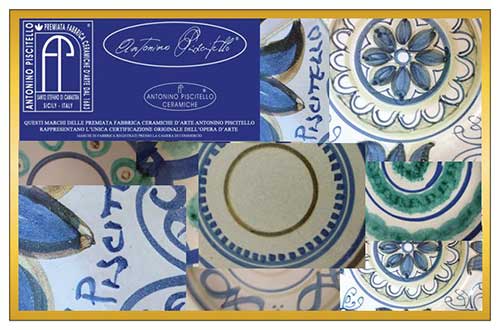
Alongside the production of anthropomorphic lamps and statuettes, during the 19th century, there was a significant production of functional ceramics from various Sicilian towns such as Collesano, Patti, S. Stefano di Camastra, Caltanissetta, Terrasini. At the beginning of the century XX, the Sicilian craftsmanship undergoes a serious crisis and of the ancient furnaces of the past today only those of Caltagirone, Sciacca and S. Stefano di Camastra remain active. |


.jpg)

















